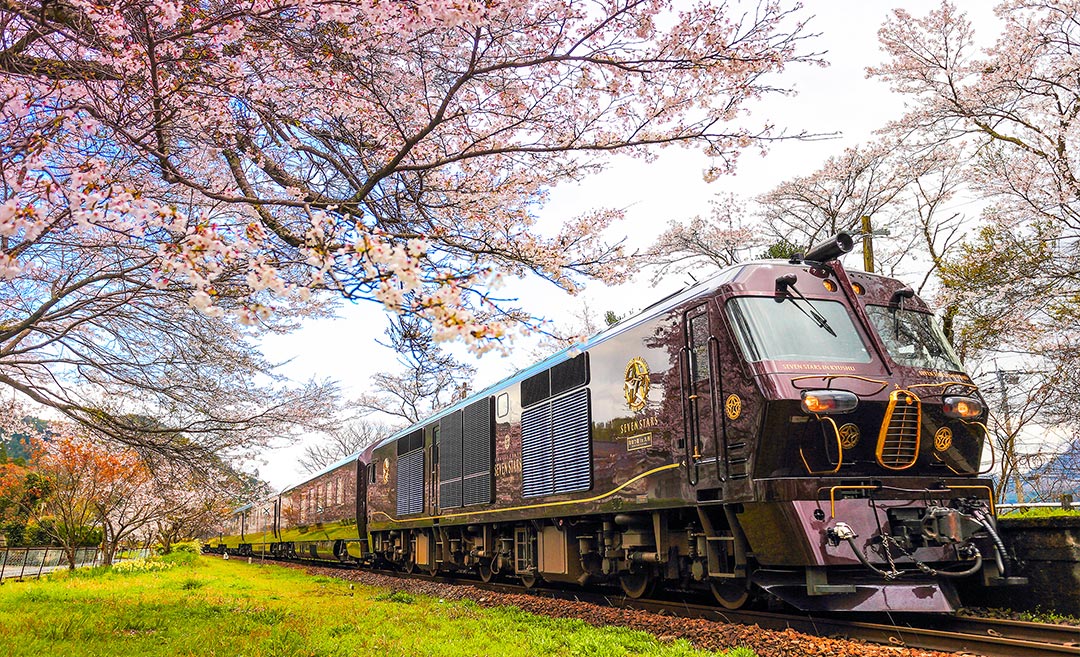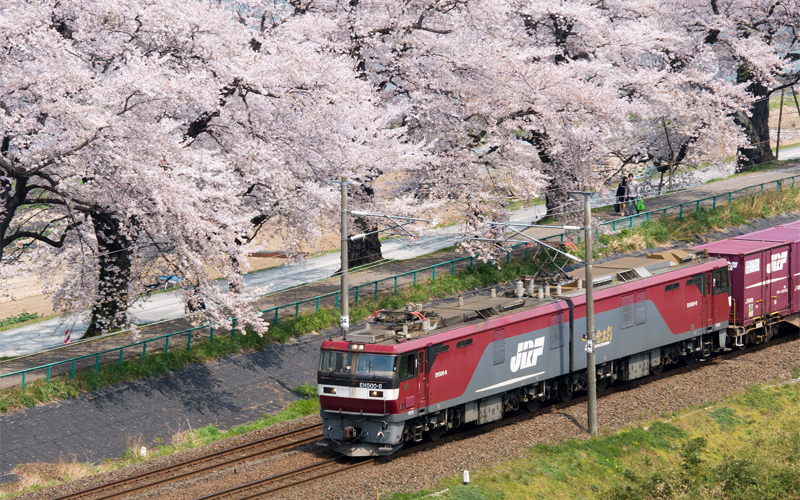Kyushu, Japan’s third-largest and southernmost island (excluding Okinawa), is home to the nation’s slowest but most luxurious train service, Seven Stars in Kyushu (referred to as Nanatsuboshi in Kyushu). Readers of Condé Nast Traveler (USA) have nominated the train three years in a row as the world’s best railway journey.
Despite the train’s facilities being equal to those of a highly-starred hotel or resort, its name refers to Kyushu’s seven prefectures, seven major attractions, and its seven carriages, rather than the degree of luxury accorded to hotels.
The train is operated by Kyushu Railway Company (JR Kyushu) and departs from Hakata Station in Fukuoka, the largest city in Kyushu. The locomotive hauls seven carriages that can accommodate a maximum of 20 passengers and crew.
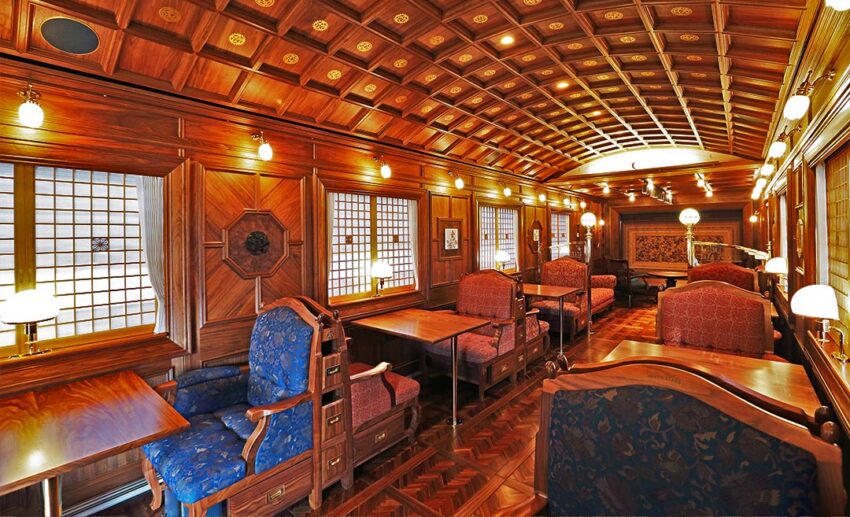
Both the locomotive and carriage exteriors are finished in a glistening burgundy livery. The train was designed by Eiji Mitooka, a famous Japanese industrial designer who also designed the other sightseeing and 800 series bullet trains that operate in Kyushu. Attention to detail is a hallmark of Mitooka and the Seven Stars in Kyushu, with interiors meticulously crafted from Japanese timber parquetry and marquetry, ceramics, and textiles. Car one is the Blue Moon Lounge Car, and car two is the Mokusei or Jupiter Salon Car, with one section devoted to tea ceremonies.
Mitooka was also responsible for designing the Kinsei or Venus Lounge and an exclusive Seven Stars guest restaurant on the platform of Aso Station called Kasei (Mars), where guests enjoy breakfast at the beginning of their journey.
All aboard!
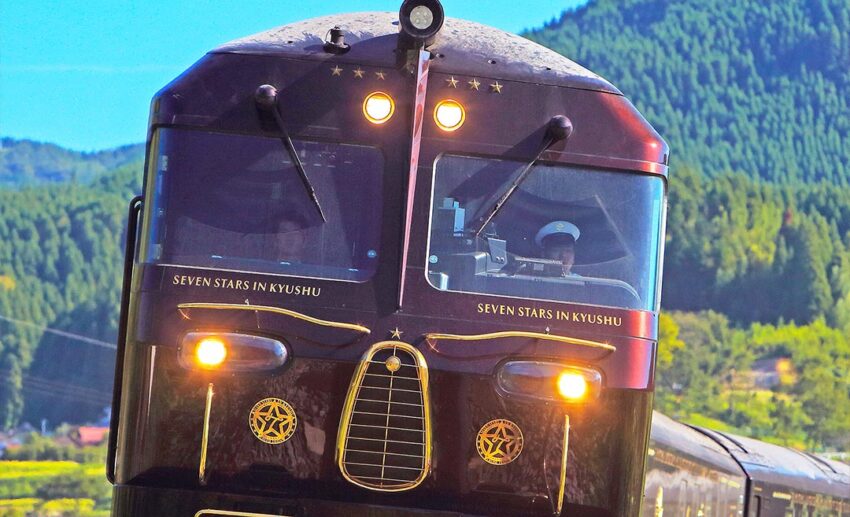
Passengers gather in the dedicated Kinsei Lounge at Hakata Station to enjoy some finger food before being ushered to their air-conditioned compartments, set up as double or twin bedding with an attached ensuite shower/toilet lined with local cypress timber. An all-inclusive mini-bar and Wi-Fi services are provided in each suite.
After unpacking, passengers can explore the train’s common areas, including a lounge car where a musician performs and a saloon car where a magician injects a little magic into most meals.
Japanese and Western culinary masterpieces are prepared by renowned chefs to ensure the train successfully combines food, culture, nature, and nostalgia in all its departures. Menus and chefs alternate throughout the year, and guests are served on the train or at off-train restaurants on their journey. Passengers could enjoy meals like famous Hakata-style sushi, meals created from organically grown ingredients, a dinner featuring French cuisine prepared from local seasonal ingredients, or a fusion culinary creation from the city of Oita.
Carriages are numbered, but this depends on the location of the locomotive during the journey. During the journey, the locomotive is detached and reattached to the other end of the train so that the lounge car is located at the back or the front of the train at different times. At other times, car seven, which includes deluxe suite 701, is either attached at the back or the front of the train adjacent to the locomotive.
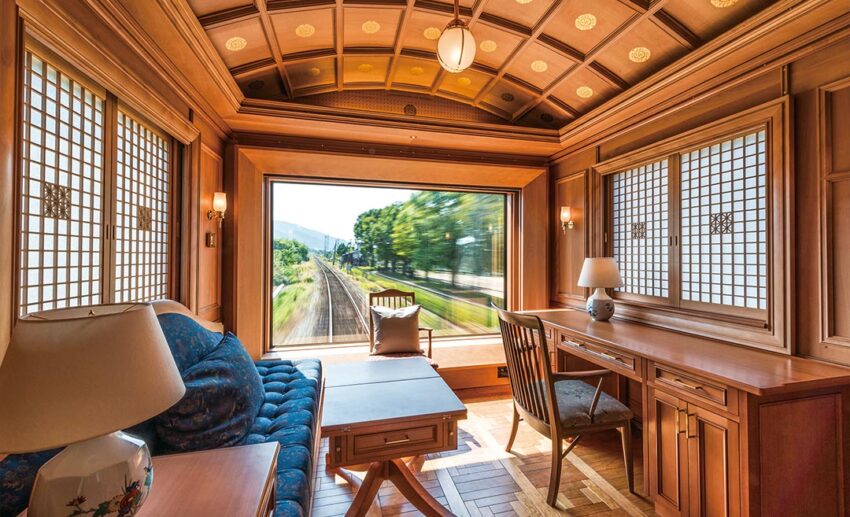
When the locomotive is at the front, car one, which houses a lounge and the Blue Moon Bar, is at the back. This car features a floor-to-ceiling panoramic window for views of the passing scenery. The other accommodation cars have three suites per carriage, and car seven at the front has just two deluxe suites, which can accommodate up to three passengers each. The location of the front and rear carriages changes depending on the locomotive’s positioning.
Passengers are occupied on the train with a variety of activities, such as a tea ceremony conducted by a tea sommelier. Kazu Bar is an intimate venue for designer cocktails. Various craft activities are conducted for those who don’t want to participate in the organised excursions. The train’s sommelier serves complimentary wines, sake, shochu, and other premium beverages.
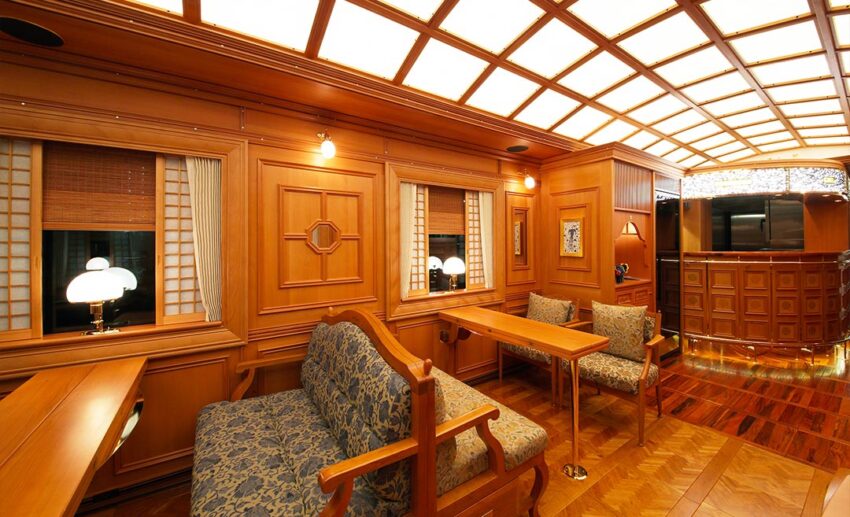
Exploring Kyushu
Depending on the season, the train passes through forests of colourful hues—rice fields, bays with fishing trawlers, and mountainous landscapes. Passengers alight at several stops to dine and also stay an evening at Tenku no Mori Hot Spring Resort, a traditional ryokan inn located within 60 hectares of lush natural beauty beneath Kirishima Mountains. Here, guests can relax in their own private onsen (hot spring), applicable on the 4D3N journeys only.
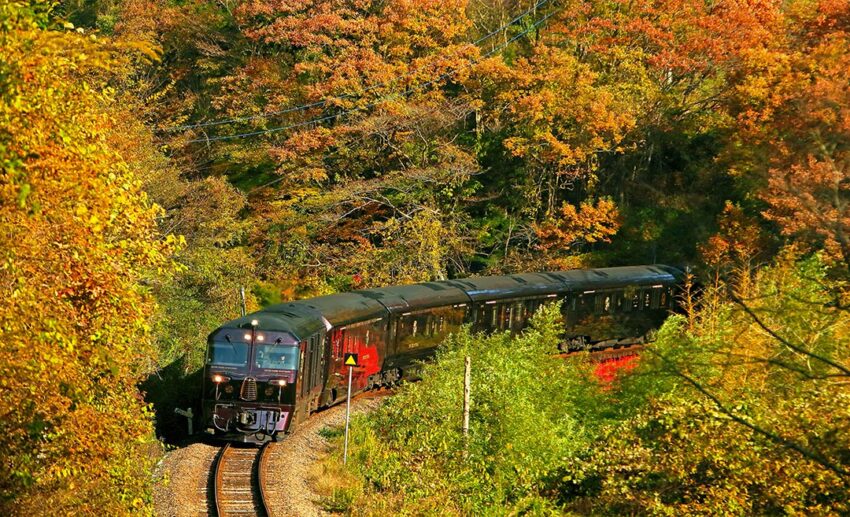
Other optional tours include a visit to Onta, a pottery village where artisans harness waterpower and wood fire to create their masterpieces, and a forest walk along a mossy riverbed for a meditation session inside a cave adjacent to the eighth-century Kumano Magaibutsu Buddhist relief.
One of the highlights is visiting the Aso volcano, which has a caldera of 128 km circumference and offers panoramic views from the rim over the sea of rice fields surrounding the mountain. Near Kagoshima, train travellers can admire Sakurajima, one of the island’s active volcanoes, located just beyond the Kinko Bay waterway.
Like other celebrated trains around the globe, travelling on the Seven Stars in Kyushu is a journey many well-to-do Japanese aspire to take. The train offers four-day, three-night journeys as well as two-day, one-night tours.
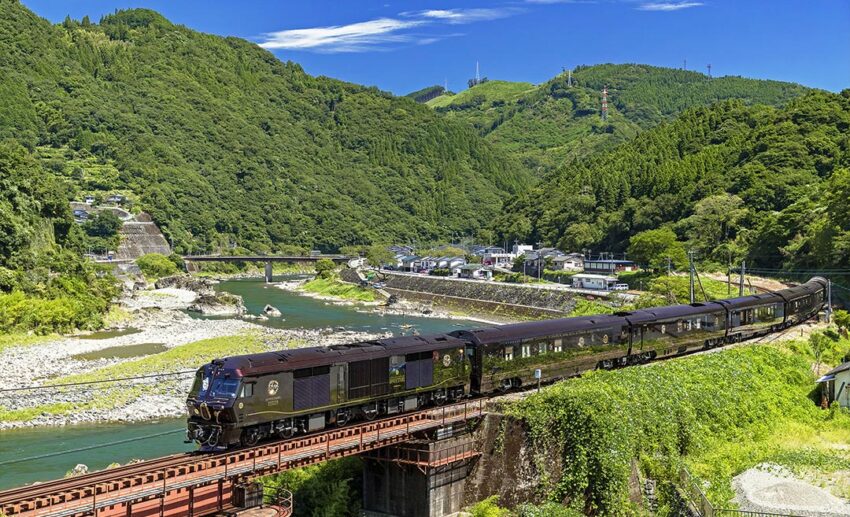
Elusive and exclusive
With just ten guest compartments, the waiting list for a berth on this train is long, and impending travellers need to inquire about a reservation many months in advance. Both journeys each week are booked months ahead, but some cabins are reserved for lucky foreign travellers. Bookings are allocated twice a year via a lottery, and overseas guests are advised to use an international agent like Luxury Train Club (UK) to hopefully secure a spot. The rail fares for this exclusive train journey are expensive and in line with those of other luxury trains.
The service operates throughout the year, with a few months off for maintenance of the train during the summer. The peak seasons are the same as the peak tourism seasons for Japan, which are during spring and autumn. Another popular time to travel by train in Kyushu is the cherry blossom season, usually around the last week of March to the first week of April.
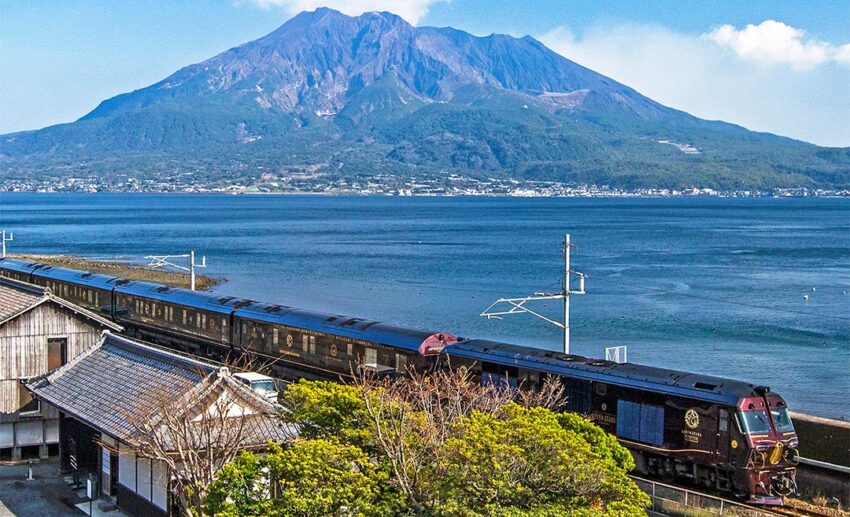
Budget-friendly options
JR Kyushu operates other tourist, resort, and excursion trains, and travellers on more modest budgets can discover the island’s rich assets using a JR Kyushu Rail Pass, which offers unlimited multi-day travel.
For example, a new D&S Train, designed to immerse passengers in the unique ambience of the Yufu Kogen Line, embraces the essence of the region. JR Kyushu just launched the Limited Express D&S Train, which departs Hakata Station and makes one daily trip (except Thursday) on the Yufu Kogen Line via Yufuin to Beppu Station. It takes five hours, and the fare includes a luxurious bento box meal sourced from local Fukuoka and Oita restaurants. Bookings are best made via a travel agent.
David Bowden is the author of Great Railway Journeys in Asia, published by John Beaufoy, which includes the Seven Stars of Kyushu rail journey.
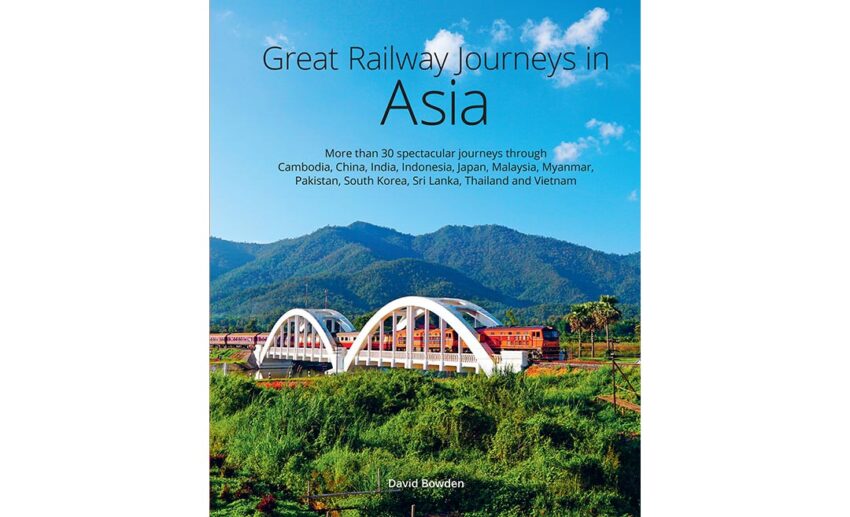
All photos by Seven Stars in Kyushu.

